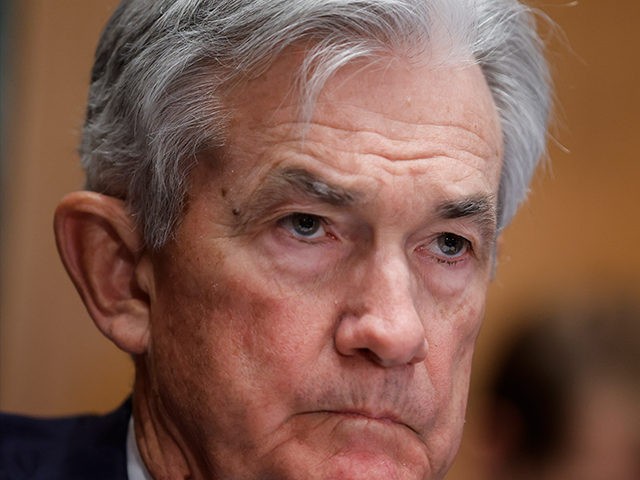Jerome Powell warned in a terse speech on Friday that the Federal Reserve’s campaign to bring down inflation would have ‘unfortunate costs’ that would weaken the labor market, slow growth, and inflict pain on businesses and households.
The Fed chairman’s highly anticipated speech at an economic conference at Jackson Hole, Wyoming took less than ten minutes and was tightly focused on the message that the Fed would continue raising interest rates and hold them at a high level even though it expects this policy to be painful for businesses and American families.
“While higher interest rates, slower growth, and softer labor market conditions will bring down inflation, they will also bring some pain to households and businesses. These are the unfortunate costs of reducing inflation,” Powell said. “But a failure to restore price stability would mean far greater pain.”
The idea that inflation could be brought down painlessly was nowhere to be found in the speech, marking a break from past remarks that indicated Fed officials believed a “soft-landing” was still a possibility.
Importantly, Powell said that while interest rates hikes “will” work to bring down inflation, they “will” also cause pain. The outcome of lower inflation and economic pain is set, in Powell’s view.
“We are moving our policy stance purposefully to a level that will be sufficiently restrictive to return inflation to 2 percent,” Powell said. “Restoring price stability will likely require maintaining a restrictive policy stance for some time. The historical record cautions strongly against prematurely loosening policy.
The message: high-interest rates will last longer than some now expect. Recent market action has indicated some investors expect the Fed will pivot to cutting rates next year. Powell’s speech appears intended to counter that expectation.
Fed officials raised their benchmark interest rate—the rate banks pay overnight to borrow reserves known as federal funds from each other—by 0.75 basis points at each of their last two meetings, the first hikes of that size since 1994. Prior to that the Fed had raised the fed funds rate by 25 basis points in March, the first hike since the pandemic struck and fed cut rates to near zero to support the economy, and by 50 basis points in May.
The fed funds target is now a range between 2.25 percent and 2.50 percent, with the effective rate observed in the market around 2.33 percent. The projections of Fed officials released at their June meeting showed the median expectation of officials for the effective rate would be 3.4 percent at the end of this year, implying a range of between 3.25 percent and 3.50 percent. With only three more meetings left this year, that implies at least one 50 basis point hike followed by two more 25 basis point hikes. Of course, Fed officials may have changed their views in the intervening months, something that they will have a chance to express when the next set of projections is released after the two-day meeting starting on September 20.
The projections released after the June meeting showed officials expect the Fed funds target range would rise another fifty basis points next year, to 3.75 to four percent. This could be taken as an indication that the Fed expects to pause interest rate hike next year after a couple of 25 basis point hikes or to spread hikes out.
Powell explicitly pointed out that Fed officials “will update their projections at the September meeting,” likely a hint that the projections will reflect a steeper path of rate increases next year and no cuts even though a steeper economic slowdown is expected.
The market reflects an expectation that the Fed will hike more this year than the June projections suggest. Fed funds futures prices imply nearly a 47 percent chance that the fed funds rate is in a range of 3.50 to 3.75 by year-end, twenty-five basis points higher than the median Fed projection, and a 37 percent chance of 3.75 to four percent. Many believe that reflects an expectation that the Fed may raise rates by 75 points at the September meeting, rather than slowing the pace of rate raises to 50 basis points.
Following Powell’s speech, the futures market implied nearly even odds of a 50-basis point hike and a 75-basis point hike, with the odds slightly favoring the larger hike. Yesterday, the market implied a 64 percent chance of a 75-basis point hike. That could be interpreted as a signal that some investors read Powell’s speech as indicating a bigger hike was less likely.
Inflation slowed down in July. The Fed’s favored measure of inflation, the core personal consumption price index, rose just 0.1 percent for the month and the better-known Consumer Price Index was flat for the month. In his Jackson Hole speech, however, Powell warned that a single month’s improvement “falls far short” of what Fed officials “will need to see before we are confident that inflation is moving in the right direction.”
The major stock indexes fell following Powell’s speech, seeming to indicate that at least in the immediate wake of the Fed chair’s words the market was anticipating tighter financial conditions and weaker economic conditions ahead.

COMMENTS
Please let us know if you're having issues with commenting.